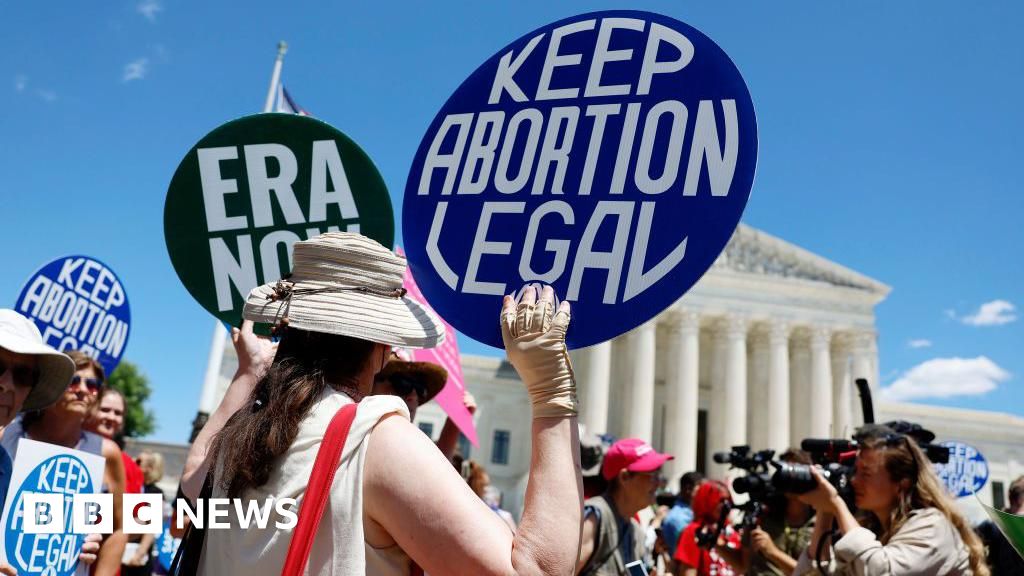 Getty Images
Getty ImagesInfant mortality rates have increased in US states which have enacted abortion bans following the landmark ruling overturning the nationwide right for women to access the procedure, a new study has found.
According to researchers, there were an estimated 478 infant deaths across 14 states with bans or heavy restrictions after six weeks of pregnancy – which they say would not have occurred had they not been not in place.
Alison Gemmill, co-leader of the study, said “restrictive abortion policies” could be “reversing decades of progress” in reducing infant deaths across the US.
In its 2022 ruling, the US Supreme Court reversed its 50-year-old Roe v Wade decision which had protected a woman’s constitutional right to terminate a pregnancy up until the point of foetal viability, around the 24th week.
The study, published this week by researchers from the John Hopkin’s Bloomberg School of Public Health, found an increase in mortality rates for babies born with congenital issues, as well as among groups where death rates already were higher than average.
This included Black infants, as well as for babies whose parents were unmarried, younger, did not attend college, and for those living in southern states.
As of January 2025, 17 states have outlawed nearly all abortions, though some have narrow exceptions for cases of rape, incest or the health of the mother.
States with a total ban include Idaho, Alabama, Arkansas, Indiana, Kentucky, Louisiana, Mississippi, Oklahoma, South Dakota, Tennessee, Texas and West Virginia.
Florida, Georgia, Iowa and South Carolina ban the procedure after six weeks of pregnancy.
Meanwhile, there are bans in place in Nebraska and North Carolina for procedures after 12 weeks, while it is 18 weeks in Utah.
Congenital malformations
In the states which opted to enact the new laws, infant mortality rates increased to 6.26 per 1,000 live births, compared with an expected rate of 5.93 per 1,000 – a relative increase of 5.6%.
The study also found an increase in the number of infant deaths from congenital anomalies, rising from an expected 1.24 per 1,000 live births to 1.37 per 1,000 – a relative increase of 10.87%.
Mortality from other causes rose to 4.89 per 1,000 from an expected 4.69, a 4.23% increase.
Among non-Hispanic Black infants, there were 11.81 deaths per 1,000 live births after the bans, compared to an expected rate of 10.66 per 1,000, an increase of nearly 11%.
According to the research, the increase in infant mortality due to congenital malformations was consistent with women being denied abortions for non-viable pregnancies – where a pregnancy cannot possibly result in a liveborn baby.
But the increase due to non-congenital causes “is less straightforward”, researchers say.
The study also found the ban may be disproportionately impacting disadvantaged populations who are already at a higher risk of infant mortality as well as delays in receiving medical care.
Separate research from John Hopkin’s Bloomberg School of Public Health found that abortion bans were also linked to increased fertility rates.
Following the overturning of Roe v Wade, which returned control over the procedure back to individual states, researchers found that the number of births per 1,000 reproductive-aged females in affected states rose by 1.7%, or 22,180.
The estimated differences in fertility were largest in states with among the “worst maternal and child health outcomes”, the research suggested.

